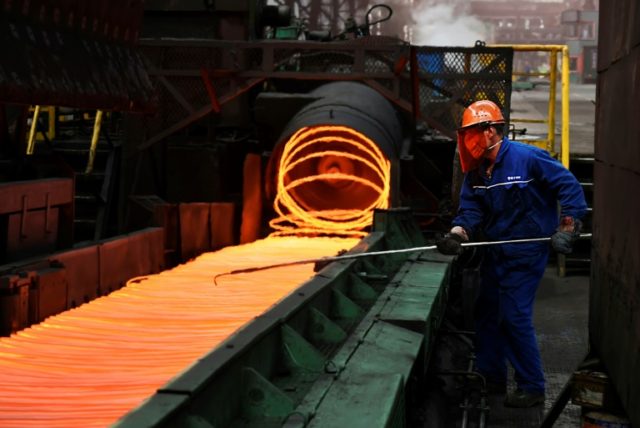Massive increases in U.S. steel imports from Vietnam that coincided with led to a Commerce Department investigation and announcement on Monday that China is using Vietnam to circumvent anti-dumping and countervailing duty orders.
Corrosion-resistant steel (CORE) shipments from the Socialist Republic of Vietnam to the U.S. jumped from a meager $2 million to a massive $80 million and shipments of cold-rolled steel flat products shot from $9 million up to $215 million in 2015, the same year that preliminary duties were imposed on Chinese products, according to the U.S. Department of Commerce.
The Commerce Department revealed Monday that it found the imports of CORE and cold-rolled steel from Vietnam produced from substrate that originated from China was “circumventing the antidumping and countervailing duty (AD/CVD) orders” on imports of these products from China to the U.S.
Due to the findings, “Commerce will instruct Customs and Border Protection (CBP) to continue collecting cash deposits on imports of CORE and cold-rolled steel produced in Vietnam using Chinese-origin substrate.” CBP will use the AD/CVD rates of 199.43 percent on these CORE imports and 39.05 percent on these cold-rolled steel imports. These are the rates previously determined for imports from China.
Those in Vietnam looking to export CORE and cold-rolled steel products to the U.S. that is produced from substrate originating in either Vietnam or countries other than China are eligible to seek an exemption from these rates.
Commerce conducted the investigation into these Chinese steel dumping practices after U.S. domestic producers of these products requested it. The companies requesting the investigation were Steel Dynamics, Inc., California Steel Industries, AK Steel Corporation, ArcelorMittal USA LLC, Nucor Corporation, and United States Steel Corporation.
President Donald Trump directed Commerce to investigate whether the level of steel and aluminum imports to the U.S. threatened national security. Trump has pointed to the practicing of dumping from other countries into the U.S., especially from China. “If we ever have a conflict, we don’t want to be buying the steel from the country that we’re fighting, because somehow that doesn’t work very well,” Trump told a bipartisan group of lawmakers in a February White House meeting ahead of the decision to impose the new steel and aluminum tariffs. China also appears to be seeking to take advantage of weakened U.S.-based steel companies by gaining control or influence over them.
Trump imposed tariffs on steel and aluminum of 25 and ten percent, respectively, in early March. The President noted that he was keeping a promise made on his 2016 campaign trail and that the move was a matter of national security.
During a Tuesday Capitol Hill hearing Treasury Secretary Steven Mnuchin announced that while the U.S. is backing off of pursuing up to $150 billion in tariffs on China as the two countries negotiated the U.S. trade deficit with the nation, the U.S. is not relenting on steel and aluminum tariffs on Chinese imports. Mnuchin said these current steel and aluminum tariffs were not part of the U.S.-China trade negations.
Follow Michelle Moons on Twitter @MichelleDiana

COMMENTS
Please let us know if you're having issues with commenting.